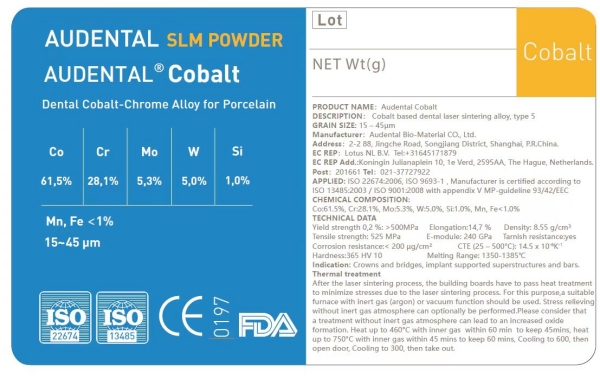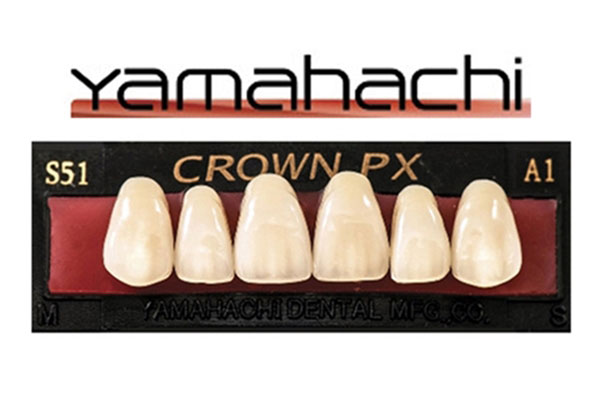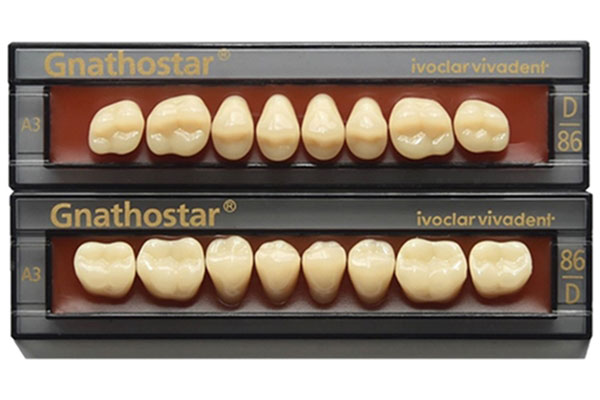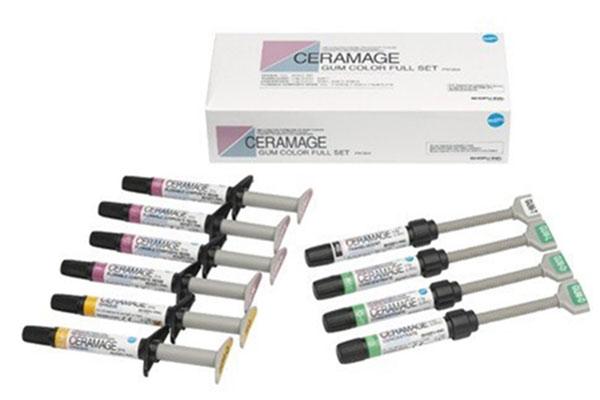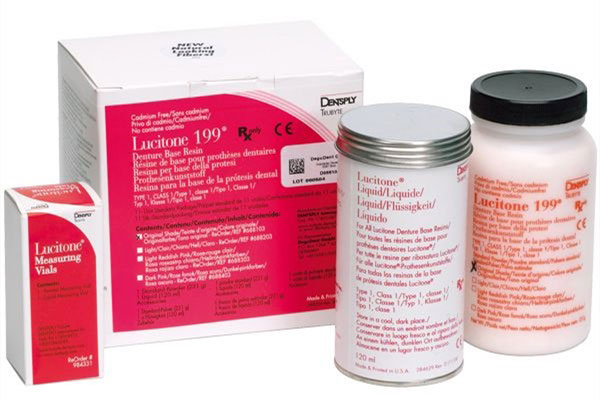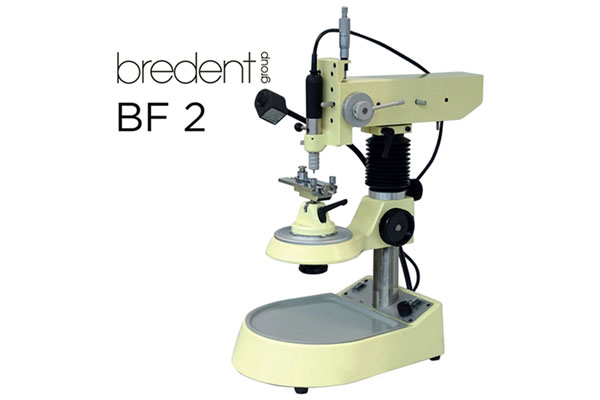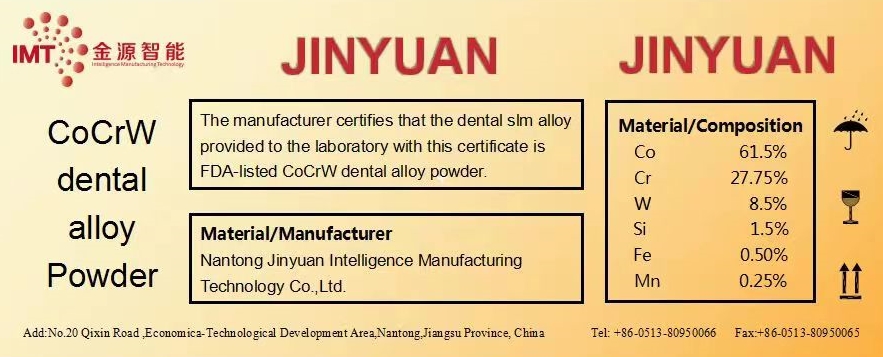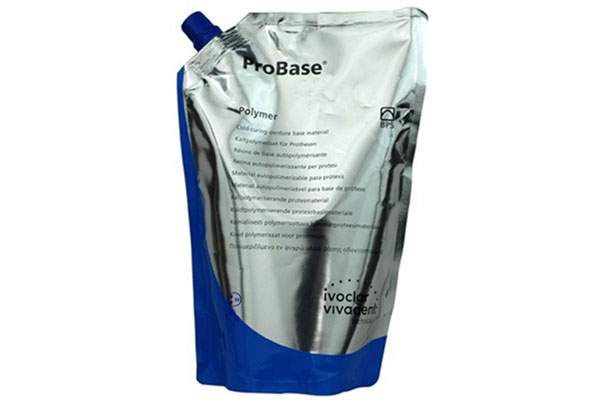Telescopic Crowns Lab from China

Robust Telescopic Crowns
A telescopic dental case, also known as telescopic crown or telescopic partial denture, is a combination of fixed restoration and removable restoration.
The fixed restoration consists of two components: an inner primary coping and an outer secondary coping. These components fit perfectly together, utilizing a telescopic or double-crown design to provide support and stability for a dental prosthesis, usually a partial denture with dental framework.
This design avoids implant surgery, but allows for improved retention and durability compared to conventional dentures, enhancing the functionality, aesthetics and longevity of the dental restoration.
Telescopic Crowns Lab Equipment & Material
Robust Telescopic Crowns Specification
| Product: | Telescope crown |
| Metal for crown: | JinYuan/ Audental from China (FDA/ CE certified) |
| Metal for framework: | JinYuan/ Audental from China (FDA/ CE certified) |
| Composite material: | SHOFU from Japan |
| Standard acrylic base: | Lucitone 199, Dentsply from USA |
| Premium acrylic base: | Probase, Ivoclar from Liechtenstein |
| Standard acrylic resin teeth | YAMAHACHI from Japan |
| Premium acrylic resin teeth: | Gnathostar, Ivoclar from Liechtenstein |
| Milling machine: | Bredent BF2 |
| Warranty for fixed restoration: | 5 years |
| Warranty for framework: | 2 years |
| Warranty for acrylic partial: | 1 year |
1. What is the difference between telescopic denture and implant overdenture?
A telescopic denture and an implant overdenture are both dental prosthetic options, but they differ in their attachment mechanisms and how they are secured in the mouth:
Telescopic Denture
- Use a telescopic or double-crown design with inner and outer components.
- Rely on the remaining natural teeth (abutments) for support and stability.
- The inner primary coping and outer secondary coping of the telescopic design provide retention and support for the denture or bridge.
- Do not require implants for anchorage; instead, it uses the existing teeth for support.
Implant Overdenture
- Involve the surgical placement of dental implants into the jawbone.
- The denture is then attached to these implants using attachments such as bars, balls, or locator systems.
- Implant overdentures offer stability and retention through the implants, enhancing chewing ability and preventing bone loss in the jaw.
In summary, the main difference lies in their attachment and support mechanisms: telescopic dentures use existing natural teeth for support, while implant overdentures are anchored to dental implants surgically placed in the jawbone. Both options aim to improve the stability and functionality of dental prostheses but rely on different methods to achieve it.
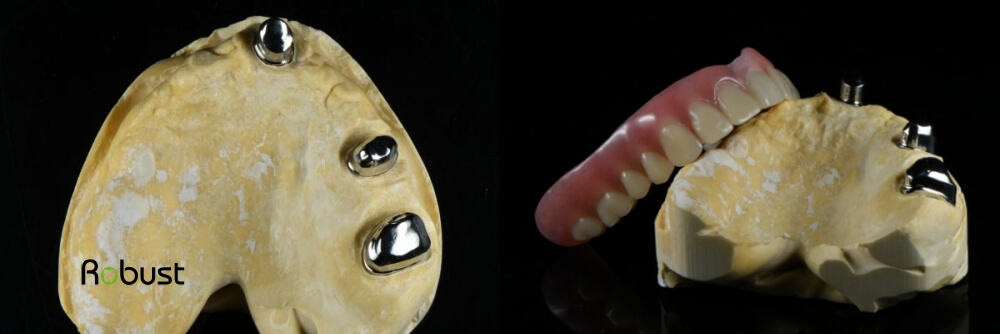
2. Advantages of telescopic restoration
Telescopic restorations offer several advantages:
- Enhanced Stability — The double-crown design provides increased stability and retention for dental prostheses compared to conventional options.
- Preservation of Natural Teeth — They utilize existing healthy teeth as abutments, preserving natural tooth structure rather than relying solely on dental implants.
- Improved Durability — The telescopic design’s two-component system often results in a longer-lasting restoration due to its robust structure.
- Adjustability — They allow for adjustments and maintenance of the prosthesis without major alterations to the remaining teeth or underlying structures.
- Comfort and Functionality — They offer improved comfort and functionality, enhancing chewing ability and speech.
- Aesthetics — Telescopic restorations can contribute to better aesthetic outcomes, providing a natural appearance.
3. Disadvantages of telescopic restoration
While telescopic restorations offer various advantages, they also come with a few limitations:
- Complexity of Procedure — The process of preparing teeth and designing the double-crown system can be more complex and time-consuming than other restorative options.
- Cost — Telescopic restorations can be more expensive due to the complexity of the procedure, laboratory costs, and materials involved.
- Potential for Wear — Over time, the telescopic components may experience wear, leading to a decrease in retention and stability of the prosthesis.
- Risk of Complications — If not properly maintained, telescopic restorations can pose a risk of complications, such as decay or damage to the abutment teeth.
- Limited Suitability — Not all cases are suitable for telescopic restorations. Factors such as the condition of existing teeth, oral health, and individual anatomy may limit their applicability.
- Need for Regular Maintenance — Proper oral hygiene and regular dental check-ups are crucial for the long-term success of telescopic restorations, requiring ongoing maintenance and care.
Despite these disadvantages, when properly planned, executed, and maintained, telescopic restorations can provide durable and functional solutions for dental prostheses.
4. How long does a telescopic restoration last?
The longevity of a telescopic restoration can vary depending on several factors:
Maintenance — Proper oral hygiene and regular dental check-ups are essential to maintain the integrity of the restoration.
Individual Oral Health — The condition of the remaining natural teeth (abutments) and the patient’s oral health habits play a significant role in the longevity of the restoration.
Materials Used — The quality of materials used in the construction of the telescopic restoration can influence its durability.
Wear and Tear — Over time, wear and tear on the telescopic components can affect the stability and functionality of the restoration.
With appropriate care and maintenance, a well-constructed telescopic restoration can last for many years—often a decade or more. However, individual experiences may vary, and regular dental evaluations are essential to ensure the restoration’s longevity.
5. How many types of telescopic restoration?
When it comes to types of telescopic restorations, we are actually refering to different materials used. Usually, we will use non-precious metal (Cobalt-chrome metal alloy) for the inner crowns, outer crowns and frameworks. It is more cost effective and have the same fuctionality and stability.
However, some pateints would ask for semi-precious metal alloy or yellow gold metal alloy for inner and outer crowns, if they are allergic to non-precious metal. Since telescopic restaration itself is expensive to have, using semi-precious or yellow gold metal will be even more expensive. With new technologies, now we can even use zirconia for inner crowns and outer bridge.
